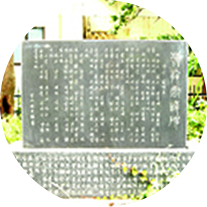Han Yong-un
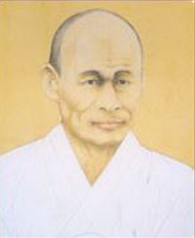
- Pen Name Manhae
- Period Japanese Colonial Era (1879 ~ 1944)
- Field Literature
Manhae Han Yong-un was the second son between Han Eung-jun, a descendant of Han Myung-bo, Seowongun of Han family in Cheongju, and On Yang-bang, He was born at Bakcheoldong Jambanggul in Seonggok-ri, Gyeolseong-myeon on August 29, 1879 (16th year of King Gojong's reign). His childhood name was Yu-cheon, and his real name was Jeong-ok. His Buddhist name was Yong-un, and his Buddhist pen name is Manhae. He began learning the Chinese classics in Seodanggol of Seonggok-ri at the age of 6. At the age of 9, he was well-versed in art and science which made him become known as a child prodigy in the neighborhood.
The Japanese Government General of Korea announced the Joseon inspection order in 1911 in order to bring Korean Buddhism under complete control of Japanese Buddhism and also to control the right to the temples in Korea. Han started a movement against it, and wrote "Joseon-bulgyo-yusillon (Theory of Joseon Buddhism Reform)," being on the forefront to revolutionize Korean Buddhism.
After reading the Declaration of Independence, he was arrested by the Japanese police and was held in Seodaemun prison. While imprisoned, he wrote "Declaring the Independence of Joseon."
In 1926, he published a collection of 88 poems under the title "Your Silence." He is known for having had noble and unyielding beliefs and principles, which was evidenced by the fact that he never made compromises with the Japanese and devoted himself to liberating his country and countrymen. He passed away in Simujang in Seongbuk-dong, Seoul on June 29, 1944. He was buried next to his wife Yu at the top of mountain in Mangu-dong, Jungnang-gu, Seoul. Hongseong-gun Office restored the house where Han was born in its original spot in Seonggoko-ri, Gyeolseong-myeon and built a shrine.
Main Historical Site
- Information of Cultural Properties Designated Memorial No. 75 by Government of Chungcheongnamdo
- Location 492 Seonggokli Gyeolseongmyeon, Hongseonggun, Chungcheongnamdo
It is the birthplace of Manhae, Han Yongwun who was an independence activist, a Buddhist monk, and a poet, located at Seonggokli, Gyeolseongmyeon, Hongseonggun, Chungcheongnamdo. It is built in the sunny place with a hill behind it. The original house was demolished but in order to preserve the region as a historic site, it was restored starting from his birthplace in 1992. Other than his birthplace, local government built a shrine, three gates, management office, public washroom, etc. also reconstructing surrounding area.
The house was built to have 3 rooms in the front and 2 rooms at the side. One extra on both sides was built to use them as storage. The fence was surrounded with bush clovers. An outdoor washroom was built with clay bricks.
It was designated as a memorial No. 75 by Chungcheongnamdo Government on December 24th 1989.
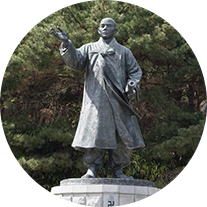
- Location Mountain 43-1, Namjangli Hongseonggun Hongseongeup, Chungcheongnamdo
It was built to set his work as an indication of national spirit, and also to instill/strengthen the spiril of Hongju with him as the pivotal figure.
The status of Han in a traditional Korean clothing holds a 3•1 declaration of independence in his left hand. His favorite poem, ‘Silence of Love’ was engraved on the right side of podium.
The writing was written by Jeong Hanseop, an advisor of Korea Art Association. Kang Taeseong, a professor of Ewha Womens’ University sculpted the statue.
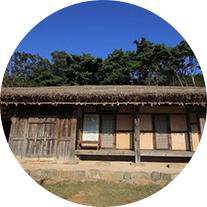
- formation of Cultural Properties Cultural Property Mateirla No. 164
- Location 492 Seonggokli Hongbukmyeon, Hongseonggun, Chungcheongnamdo
After restoring his birthplace, a shrine was built to hold his portrait.
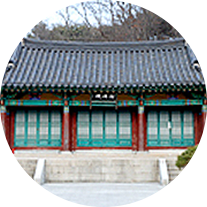
- Location 20-1 Seonggokli Gyeolseongmyeon, Hongseonggun, Chungcheongnamdo
The experience hall was built in 2007 in front of Han’s birthplace to commemorate his spirit and philosophy. On the first floor, it has a multimedia room showing his lifetime achievement and also exhibits his personal items. There is a children’s learning center next to it. On the second floor, there are a seminar room and a writing room.
